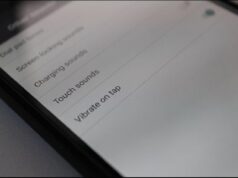Although vendors package their wireless products differently, they all use basically the same technology for connecting computers to each other and the Internet. The information in this article will give recommendations that anyone can use regardless of which device they are working with. Before presenting possible solutions however, let’s take a minute to understand why someone who configured a wireless network with the default out of the box settings should be concerned about their privacy and personal data.
A home wireless network affords the convenience of using a laptop anywhere in the home and sometimes outside the home to connect to other computers and the Internet. There lies the problem. The wireless device in many cases, might allow a next door neighbor or someone parked across the street to see and connect to computers in the home or use the Internet connection. They may even be able to see and record data sent between home computers and the Internet. How can these problems be dealt with?
WAP Configuration
Take a laptop outside the home and see how far away it can go but still see the network. Use that information to establish a radius within which connections can be made. Consider relocating the device in the home to limit this range in the best way possible.
Some devices will automatically configure encryption of all wireless data being sent to and from it. Make sure that the best encryption protocol is taken advantage of. WEP has been around for a long time, but the new WPA & WPA2 protocols are much more secure.
Another convenient feature of most wireless access devices is that they advertise their presence to make connecting to them easier. Disabling the SSID (Service Set Identifier) advertisement makes it harder to break into the network. Changing the default SSID and password that the manufacture assigned to the wireless access point will enhance security as well. The new SSID and password does not have to be very complex, but it should not be easy for people outside the home to guess.
Network Card Configuration
Most home computers use a network protocol called DHCP which allows an address to be automatically assigned to it. Any computer that gets on the network will automatically be able to communicate with the existing machines using this protocol. If DHCP is disabled and a static IP configuration is used, that will automatically remove this issue. This is not a difficult task. Instructions on assigning a static IP on a Windows computer can be found at the Microsoft web-site.
One of the most effective security measures with a WAP (Wireless Access Point) is to limit access to it using the address of the home computers wireless network cards. Every network card has a unique address assigned to it called a MAC address. The WAP can be setup to only allow access to machines with specific MAC addresses. The documentation that comes with the WAP should give detailed instructions on configuring this and other security settings.
Taking the time to understand and setup security settings for a wireless network can take a few hours in some cases. If the protection of private data and Internet browsing traffic is important however, the time spent is well worth it.


















